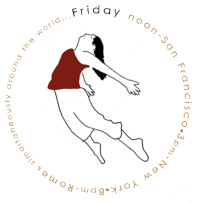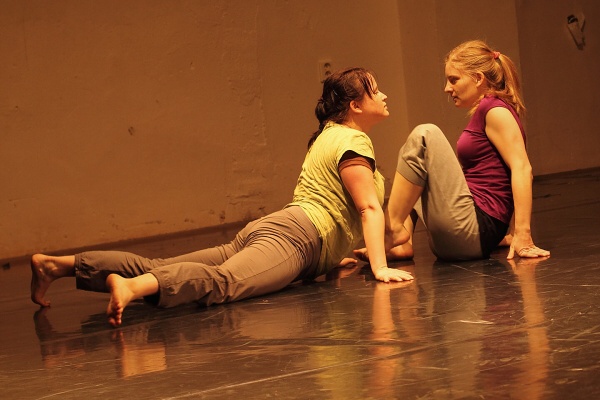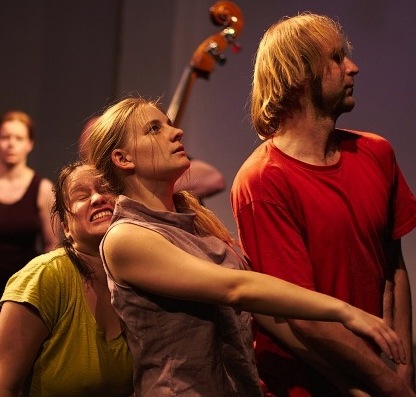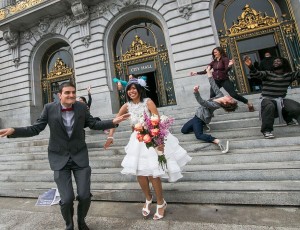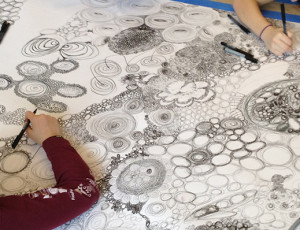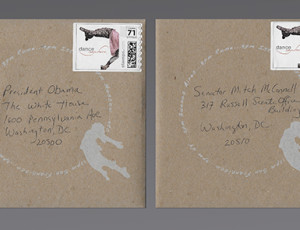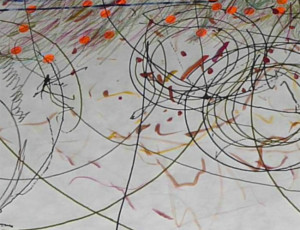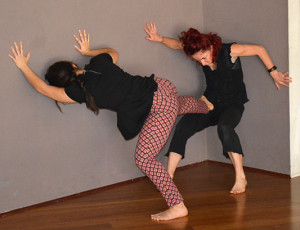Improvizační skupina NAU is an improvised performance group founded by Markéta Vacková. Like Dance Anywhere, NAU seeks to inspire dance in every moment and bring people from diverse backgrounds together through movement. At a recent performance in Studio Alt@, Prague, CZ, dancers, musicians, and actors shared the stage (and at one point the audience’s seats) and improvised a compelling evening of unique and vivid performance. I spoke with Markéta after a rehearsal about her work with NAU and improvised performance:
How did you get into dance? Why do you dance?
I think I started at six years old with the folk dances. We have here a tradition of something which is called basic art schools and in every town there is one. I know in England for example or America, the afternoon activities for children like music or drama it’s included, it’s like part of the afternoon program at school. But here it’s divided, it’s two institutions. […] So I started with dancing as a little girl at such a school. And it was mostly folk dancing, and so I learned things about rhythm. And there was a little bit of jazz dance later, I suppose. But the most important for me there was to learn, to understand that I love it and I want to do it in my life. For example, I didn’t learn much of the technique there, [. . .] but when I was leaving the place knowing that I can not learn anything more there, I was crying because I knew I learned the most important thing there and it’s that I loved dance and I want to do it. So maybe it’s the most important, the energy to do it.
So what inspired you to start NAU?
This idea came to me, it was 2007, when I went on Erasmus to England. [. . .] just for one semester. I wished I could stay there longer, but I also felt I wanted to finish school and become independent from my parents, you know financially independent, so I rushed back home to complete my MA in the summer semester. So when I went there I was thinking already about writing my final thesis, and I decided for improvisation, decided to write about it. But I had to find out what kind of theme or topic to pick out from this wide field. And so I started going for improvisation lessons there. I had some experiences before, of course, it was not a new thing. But . . . the teachers I met there, how they approached improvisation really opened me and I fell in love with this way. Which was probably a mixture of what Ruth Zaporah does in her action theater—was the background from where it came— and more physical things and dancey things that Kirstie Simpson does. And Kirstie Simpson was the one who went regularly to teach at Artington. So I first met her there and meeting her was the impulse for me to start doing something in here when I came back home. I thought I want to continue in the practice of improvisation and somehow it’s my way where I am as an artist now, like what I should do. Or it’s just I felt too young, maybe, to do choreographies about things that would mean something or not. At that time I really thought I need some more life experience and professional experience to say like ‘this is my piece. I want to say this.’ So I thought it’s a really good way. And with Kirstie Simpson I saw that it could be also a way of life. That you can choose. It was a new thing for me that you can choose improvisation as your opinion or your expression as an artist. And I fell in love with her work and she just made me believe it works something so [she motions with her hand] like improvisation can really work and it’s very deep deep work.
Do you find you work toward the performances? Or is it mostly for yourselves?
Well, we are aiming to the improvised performance, the improvisation. Also, the rehearsals we use them mostly for practicing some skills which we need for the performance. It was always established . . . or most of the time we count on that there is an eye of the audience. It’s important for me that I don’t want to just do improvisation for myself, just. Also because . . . you need sometimes to dive into your cave and then practice things or look or research maybe, but it’s really the performance is something very important for me.
You spoke with audience members after your last performance, how was that?
We started with these discussions—we call them discussions but its like talking—since the beginning when we started performing. We set the situation like ‘it would be really nice if you would like to share your experiences’ or ‘if you have any questions about what you’ve just seen, we would like to explain or to really try’. And I think it’s a very good thing to meet the audience after the performance also verbally. Because with improvisation when there are a lot of personal explanations everyone can see something else. So then when people then go home, they may never talk about it with anyone. And I think this is very good also how to, maybe, educate the people. Because if you have some kinesthetic experience from the performance or maybe emotional or just didn’t understand why and you leave with these questions I think it’s not good. And when you’ve had the chance to talk about it, it kind of cleans up the air and makes a friendly atmosphere. So I can see in these discussions that there is a development in the questions the audience asks. So in the beginning it was more like, ‘was everything really improvised?’ and you know such kind of simple questions, and we’re like ‘yes, that’s what we do.’ ‘So there weren’t any cues like when you stopped at that moment?’ ‘No, it just happened.’ Really people are not used to watch improvised performances. And as we continue some people come regularly and some of them are there for the first time […] so the questions are more intellectual or complicated. Like they ask about the relationship with the music. Or, once someone asked about if we had something like a group consciousness and if we work with that. And it’s like woosh! questions that we’re not able to answer. And these things are developing slowly and as people let’s say leave the group or new people come to the group, this is changing.
Do you think people are more engaged with improvised performance? What are the differences between improvised and choreographed performance?
Well maybe I can start with how I feel. For me it’s different when I know it’s improvised performance or structured improvisation or it’s a set or fixed thing. I watch it with a little bit different eyes. For example, we were talking about this vulnerability. So in improvisation I am looking forward to these moments, that they would happen because I liked them. I think it’s part of the whole thing. They are the best, you know the cool moments when everything works perfectly, and then there are these transitions or struggles and I like to watch this humanity. But in set choreography for example, if there are such moments, I don’t feel it’s right I think that’s why you have chosen to do a set choreography to try to make it perfect. Or, if you choose let say that the performer would be struggling, but it’s prepared, so in a way it’s different . . . But in one way it shouldn’t be different, maybe the engagement with the audience. I think a set piece or improvised performance involves that the performance should be there present in a way that it’s alive and its no better improvised than if choreographed.
Have you done any site-specific work or dance for camera? Besides this improvised performance what other things you do?
Site specific…I’m interested in this kind of work. I have done one small project it was just for ten days but intensive workshop, intensive work in one garden in Bratislava. There was a coach. He was an American choreographer, we invited him. [. . .] I really liked how sensitive he was to the place and I understood it’s really the respect to the place and for me to spend time there listening what is the place calling for. It’s what I like about site-specific is that you. . . there’s not so much space for your ego. It really is, the conductor is the space and then you find how you can maybe show the audience a different view on the place or to see it with different eyes, and this is very fragile work which I like. With dance for camera I don’t have much experience, although I would like to do a film and I hope I can do it soon like in the next year or year and a half. But I need to work and I have a lot of teaching.
What are your future plans?
Well, I would like to do that, start working on that film I told you about. It’s quite a big project, so I need a lot of energy to put it to start because I want to shoot it abroad so we need to organize people and the camera. But I’m really looking forward to it, and I think this must happen really soon. It’s been growing in me for four years. It’s quite a long time and now I feel it’s the time it has to be born somehow. If I don’t do it in the next year, its dead. And I’d like to collaborate with [Pedro Prazeres] on that project because it will be working with landscape a lot and he’s into the landscape. He’s originally a landscape architect you know. And that’s one thing, and I’ll continue. . . I started this autumn dancing in a dance performance for children which is based on the story of the little prince. It’s a very nice performance, very what is the word. . . anytime it happens again and again you have tears in your eyes or you have red eyes because. . . it’s a duet between an adult man and a six year old boy and I’m a fox. Fox from the book who is kind of like the guardian angel of the little prince and helping him and watching when they are watching the sunset. And I’m enjoying it so much. And then I’m leading a workshop with the children who come as audience, so when the performance is over I invite them onstage. The stage is covered in sand and they play in the sand and we do different movement things and this is a very nice experience for me because apart from that I teach quite a lot of children, and this is when it’s a combination with the performance it’s something different. It’s interesting for me to see what are the differences and how it works.
More information about NAU, it’s projects, and upcoming performances can be found at:
http://www.facebook.com/profile.php?id=100002255487361
http://www.altart.cz/index.php/en/skupiny-v-rezidenci/262-improvizani-skupina-nau.html
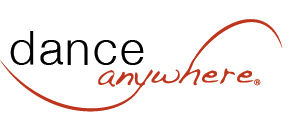
 Sign In
Sign In